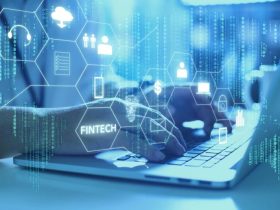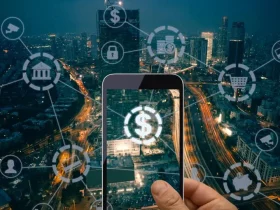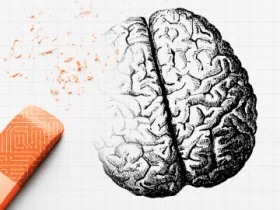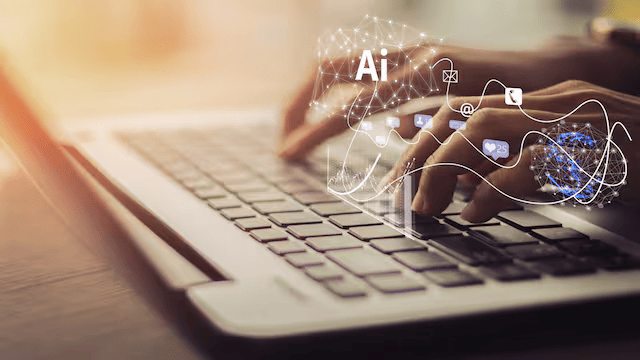In the dynamic realm of cybersecurity, artificial intelligence (AI), particularly the transformative power of generative AI, takes centre stage. Today, AI significantly enhances threat detection, response and prevention capabilities. enhances threat detection, response, and prevention capabilities.
AI effortlessly analyses large datasets to identify patterns indicative of malicious activity, enabling organisations to detect and mitigate threats in real time. With generative AI, these applications have become more robust. However, it’s crucial to remember that these tools are also accessible to those with malicious intent.
AI and Cybersecurity Challenges
The emergence of generative AI introduces novel cybersecurity risks. GenAI’s capacity to leverage vast quantities of data, often vulnerable to bias, misinformation, and poor quality, exacerbates data privacy risks.
Deepfake phishing attacks are on the rise, with bad actors using generative AI to craft more believable phishing attempts, which increased by 3000% in 2023. Ransomware attacks now leverage machine learning (ML) algorithms to identify vulnerabilities, gain access and encrypt stolen data. These attacks can also adapt tactics based on defences, making detection and mitigation more challenging.
OpenAI’s advancement with ChatGPT, including custom versions for pro users, has opened a rabbit hole of privacy risks. The ability to execute system-level commands within the environment hosting Custom GPTs bypasses many safeguards and restrictions typically imposed on software applications. This potential to affect the host system’s underlying infrastructure, data, and processes is particularly disconcerting.
Cyber attackers can also compromise AI systems with Data Poisoning, injecting malicious data into AI training sets to impact the performance and behaviour of AI systems. While some instances, like a Custom GPT replying exclusively with weather-related jokes, are benign, these inputs could be modified to further propaganda or plug malicious URLs via the third party.
Attackers are already utilising AI to exploit vulnerabilities, while cybersecurity practitioners must always remain faultless. Thus, leveraging AI to fight AI attacks and adopting proactive threat intelligence is imperative for strengthening cybersecurity defences and staying resilient against AI-driven attacks.
As AI-powered cyber-attacks become more frequent and potent, cybersecurity experts must simplify security with AI — leveraging AI-powered copilots to deliver more autonomous security and improve an organisation’s security posture:
Enhanced Threat Detection: AI-powered systems analyse vast amounts of data to identify patterns and anomalies that might indicate a threat, thereby strengthening security.
Improved Incident Response: AI can automate incident response processes, allowing for faster and more efficient mitigation of cyber threats.
Advanced Malware Detection: AI techniques such as machine learning and behavioural analysis help identify and mitigate malware attacks, including zero-day attacks.
AI-enabled Authentication: AI enhances authentication systems by analyzing user behaviour patterns and biometric data to detect anomalies or potential threats.
A holistic approach to the AI-led onslaught
Cyber readiness is non-negotiable for organisations of all sizes, as cyber-attacks can have devastating financial impacts. The global average cost of a data breach in 2023 was $4.45 million, a 15% increase over three years. As the cybercrime market becomes increasingly organized and attackers leverage AI more regularly, stagnating means falling behind. Therefore, organisations must prioritise securing AI by design, focusing on integrity and limiting data exposure from development to deployment.
Continuously Assess Cybersecurity Readiness: Regular audits and assessments and continuous monitoring using tools like security ratings help evaluate organisational security posture.
Implement Robust Cybersecurity Measures: Basic cybersecurity controls such as firewalls, intrusion detection systems, and VPNs, as well as advanced measures like AI-powered threat detection, remain essential.
Educate Employees: Most common TTPs (threats, tactics, and procedures) prey on naive employees. Thus, educating the workforce on best practices, such as password hygiene and multifactor authentication, is critical.
Develop an Incident Response Plan: A proactive plan of action is critical. If one’s not in place, the bureaucracy within the organisation may slow response time, exacerbating the issue.
Evaluate Third-Party Risks: Ensure vendors and third parties adhere to stringent cybersecurity practices. Lateral movement during supply chain attacks allows threats within a supplier’s network to make their way onto yours through insecure backdrops.
Collaborate with Cybersecurity Experts: Staying up-to-date on the latest threats and defences is essential, and working with experts can help develop customised cybersecurity solutions.
Integrating AI into cybersecurity represents a pivotal shift in how organisations protect their digital assets. As we look to the future, AI’s role in cybersecurity is poised to become even more significant, with advanced algorithms and machine learning techniques driving smarter, more adaptive security systems. By combining AI-powered tools with human expertise and a comprehensive approach to security, we can create a more resilient digital ecosystem capable of withstanding tomorrow’s cyber threats.






























Leave a Reply